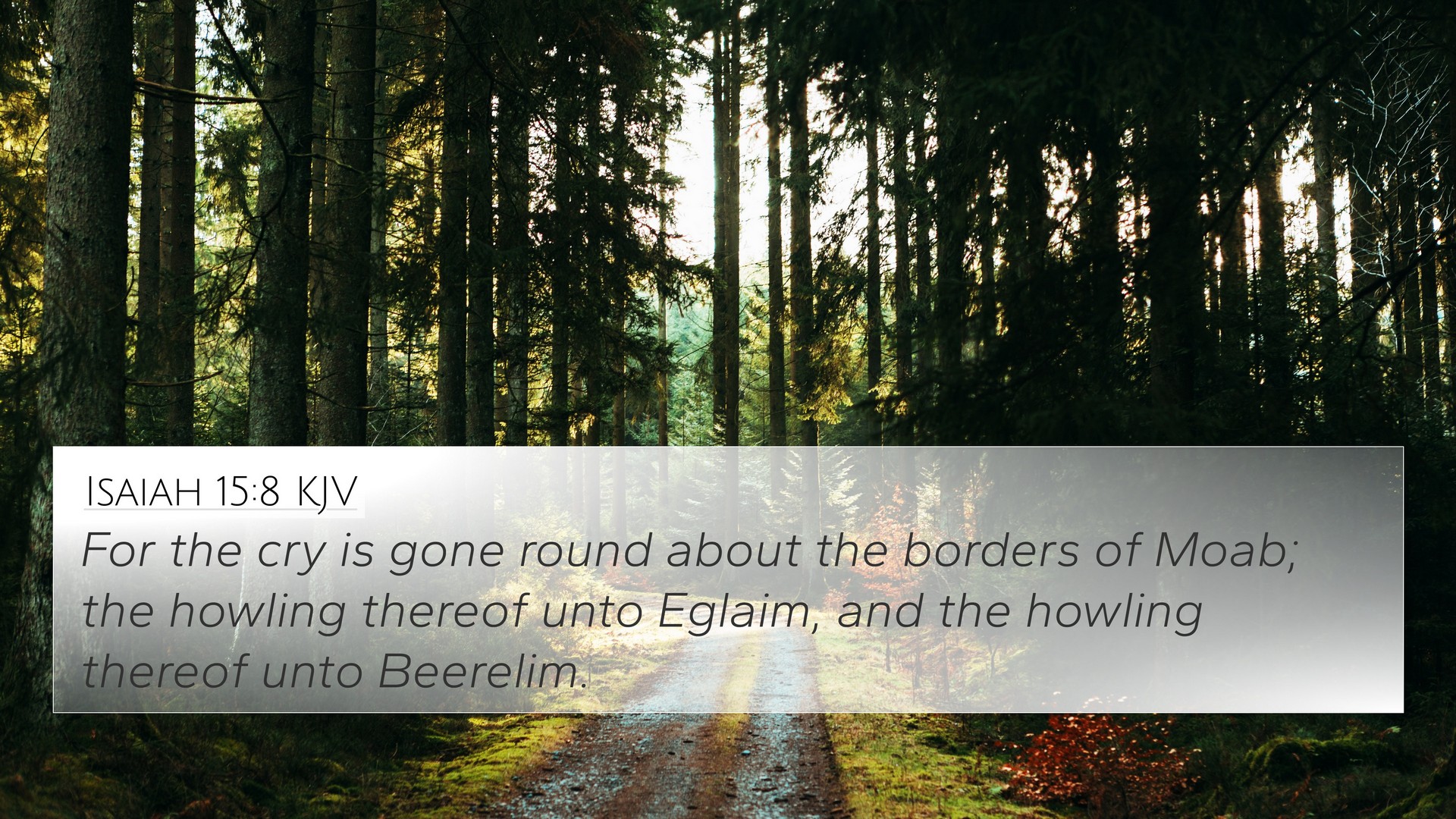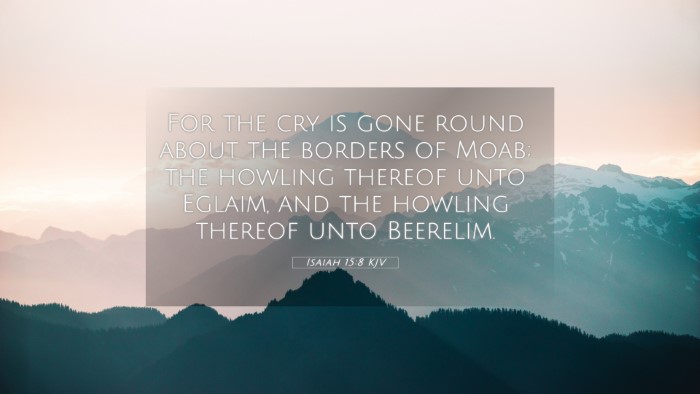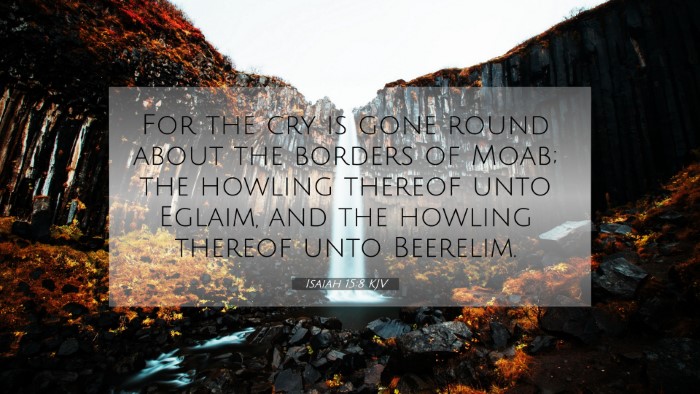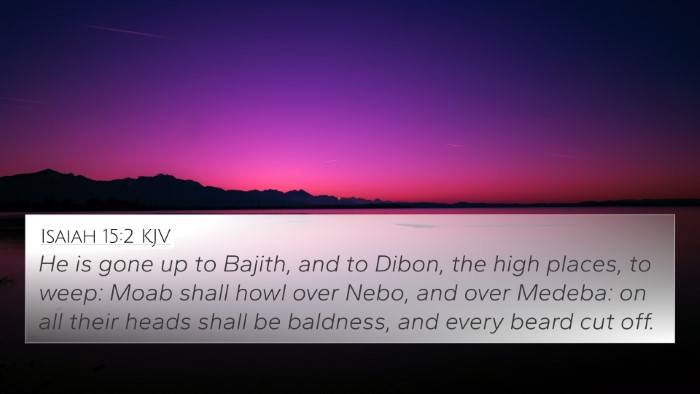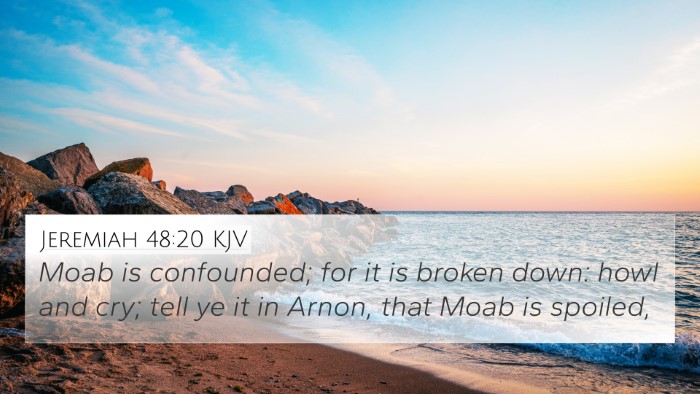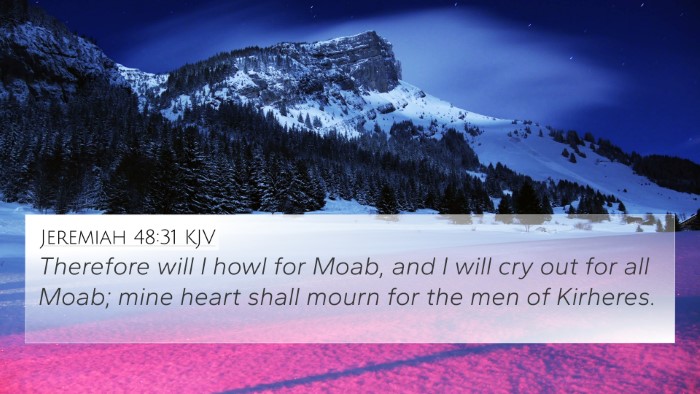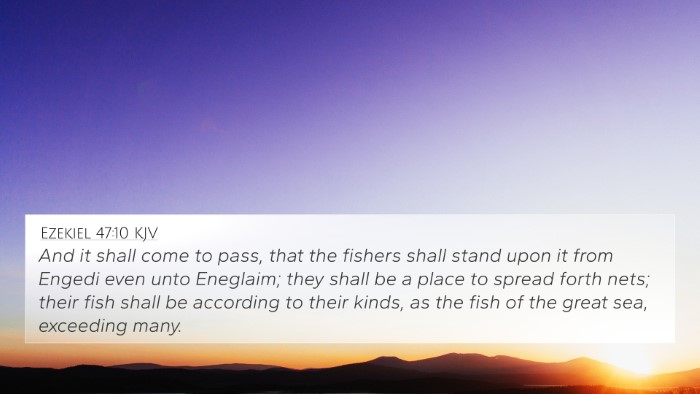Understanding Isaiah 15:8
Isaiah 15:8 depicts a poignant moment of mourning and despair experienced by the people of Moab. This verse states:
"For the cry is gone round about the borders of Moab; the howling thereof unto Eglaim, and the howling thereof unto Beer-elim."
This carries deep thematic, emotional, and prophetic dimensions that are essential for understanding the broader context of the scripture.
Context and Background
The book of Isaiah addresses the people of Israel and surrounding nations, often in the context of social injustice, idolatry, and impending judgment.
Chapter 15 specifically focuses on Moab, a neighboring nation that used to be strong but is now depicted in a state of mourning due to the coming destruction.
Verse Analysis
Emotional Resonance
The howling sounds indicate severe grief. As noted by Matthew Henry, it reveals a deep lamentation which reflects the impact of God’s judgment.
This tragedy serves as both a humanitarian cry and a spiritual commentary on sin's consequences in communities.
Theological Implications
Albert Barnes emphasizes that God’s sovereignty over nations is clearly portrayed in this verse. The lament of Moab illustrates that no nation can evade divine judgment.
In this devastation, we find prefigurations of greater themes of redemption and judgment that permeate the Bible.
Literary Considerations
Adam Clarke remarks on the structure and phrasing of Isaiah 15:8, noting that the repetition of howling signifies an overwhelming sorrow.
The mention of specific places (Eglaim and Beer-elim) creates a vivid image of widespread anguish across the land.
Cross-References and Biblical Connections
This verse is richly connected to other scriptural texts. The following Bible verses share similar themes of mourning, judgment, and national despair:
- Jeremiah 48:31: “Therefore will I howl for Moab, and I will cry out for all Moab; mine heart shall mourn for the men of Kir-hareseth.”
- Lamentations 3:48: “Mine eye runneth down with rivers of water for the destruction of the daughter of my people.”
- Ezekiel 25:8: “Thus saith the Lord God; Because that Moab and Seir do say, Behold, the house of Judah is like unto all the heathen.”
- Isaiah 16:7: “Therefore shall Moab howl for Moab, every one shall howl: for the foundations of Kir-hareseth shall ye mourn.”
- Amos 2:1: “Thus saith the Lord; For three transgressions of Moab, and for four, I will not turn away the punishment thereof.”
- Matthew 24:19: “And woe unto them that are with child, and to them that give suck in those days!”
- Revelation 18:2: “And he cried mightily with a strong voice, saying, Babylon the great is fallen, is fallen, and is become the habitation of devils.”
Thematic Connections
The theme of lamentation found in Isaiah 15:8 echoes throughout the scriptures, demonstrating that similar expressions appear when the people of God confront the reality of sin and judgment.
Understanding these connections reveals a deeper inter-Biblical dialogue concerning divine justice and mercy, as reflected in both Old and New Testament writings.
Tools for Bible Cross-Referencing
To fully appreciate the myriad connections within scripture, utilizing tools for Bible cross-referencing can be quite helpful.
A Bible concordance, for instance, allows readers to easily locate thematic and textual parallels across different books.
Practical Application
For those studying the scriptures, understanding how to find cross-references in the Bible enhances comprehension and application of biblical themes.
Comparative Bible verse analysis through cross-referencing can foster deeper insights and enrich one's spiritual understanding.
Conclusion
Isaiah 15:8 serves as a poignant reminder of the consequences of sin and the inevitable reality of judgment.
By cross-referencing this verse with others throughout the Bible, one can gain a comprehensive perspective on the themes of lamentation, divine justice, and redemption woven throughout scripture.
